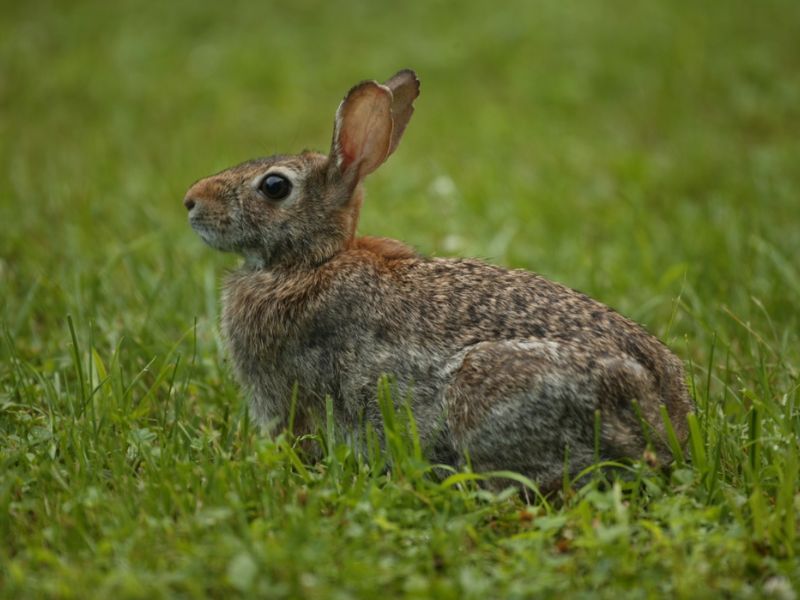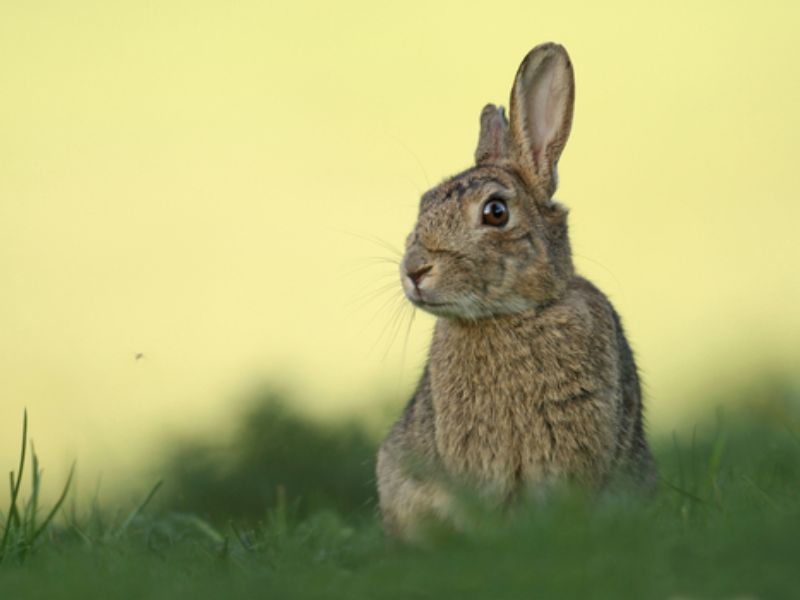Rabbits communicate primarily through subtle movements and postures rather than vocalizations. Learning the body language of a rabbit enables you to recognize your pet’s emotional state—from joy and relaxation to fear and discomfort. By tuning into these signals, you can create a safe environment, deepen your connection, and ensure your rabbit’s well-being.
1. Ears: The Rabbit’s Primary Signal
Forward/Erect (“TV Antenna”)
When a rabbit’s ears stand straight up and face forward, it’s often curious or alert. This “TV antenna” posture indicates that your bunny is actively gathering information about its surroundings. If you approach and the ears remain erect, your rabbit is comfortable with your presence and simply scanning for changes.
Relaxed/Neutral
If the ears rest in a relaxed, slightly outward position, your rabbit is content and at ease. You might notice this when your rabbit lounges or flops—an unmistakable sign of trust. In this state, the body language of a rabbit tells you that all is well and no threats are detected.
Pinned Back (Tense vs. Loose)
- Tense and Flat: Ears pinned tightly against the head signal fear, anger, or defensive aggression. In this posture, your rabbit is ready to flee or fight if necessary.
- Flat but Loose: Ears laid back but not tense signify rest or that your rabbit is listening to sounds behind it. Context is crucial—observe other cues to distinguish between calm listening and fear.
2. Eyes & Facial Expressions
Dilated Pupils & Tense Face
Wide, dark eyes accompanied by a tense facial expression indicate stress, fear, or pain. Rabbits are prey animals and rely on a wide field of vision; dilated pupils help them see potential predators but also signal high alert.
Half-Closed Eyes
When your rabbit’s eyes are half-closed and its facial muscles appear soft, it’s experiencing contentment and relaxation. You may see this during grooming sessions or when your rabbit enjoys gentle petting.
Teeth-Baring (Grimace)
A grimace with the front teeth exposed is a clear warning. This facial expression precedes a bite or aggressive move. If you see this, give your rabbit space and assess what is causing discomfort or irritation.

3. Nose Twitching & Whiskers
Rapid Twitching
Normal and healthy rabbits twitch their noses at a rate of two to four times per second. This movement pumps air across scent receptors, helping your rabbit explore new smells and stay aware.
Slow or Absent Twitching
If your rabbit’s nose twitches very slowly or not at all, it could indicate illness or extreme fear. Monitor for other signs—appetite loss, lethargy, or unusual hiding—and consult a veterinarian if reduced twitching persists.
4. Body Posture & Movement
Tense, Crouched (“Flattening”)
A rabbit pressed low against the ground with a tense body is signaling stress or fear. Known as “flattening,” this posture readies the rabbit to bolt at the first sign of danger.
Thumping Back Feet
A loud thump of the hind feet serves as an alarm call to other rabbits. If your pet thumps in your presence, it is frightened or perceives a threat. Check the environment for sudden noises or unfamiliar stimuli.
Binky (Jump & Twist)
Perhaps the most joyful display, the binky involves a rapid hop and twist mid-air. When your rabbit performs a binky, its body language of a rabbit is shouting, “I’m happy!” Celebrate this performance and ensure plenty of space for safe hopping.
Flop (Full-Body Roll)
A flop—where your rabbit wallows on its side with limbs splayed—signals ultimate relaxation and trust. If your rabbit flops in your presence, you’ve created a secure and comforting environment.
5. Tail Signals
Raised, Twitching Tail
A tail held high and twitching indicates agitation or an alert state. Your rabbit may be deciding whether to flee or confront a situation.
Tail Held Low or Draped
A low or limp tail can signify submission, illness, or exhaustion. Observe other behaviors—lack of appetite or lethargy—to determine whether a health check is needed.
6. Vocalizations & Other Sounds
Purring/Churring
Soft tooth purring or churring noises accompany content grooming sessions. These gentle sounds are akin to a cat’s purr, expressing comfort and satisfaction.
Growling, Hissing, Snorting
When annoyed or warning you to back off, rabbits may growl, hiss, or snort. These vocal cues accompany defensive postures and should be respected as clear boundaries.
Screaming
A high-pitched scream is rare but indicates extreme fear or pain. This urgent cry demands immediate veterinary attention.

7. Tactile & Social Behaviors
Nudging/Nose Bonking
Light bumps with the nose are invitations for attention or encouragement to move. Your rabbit may nudge you to open a door or hint it’s time for fresh hay.
Chinning (Scent Marking)
Rabbits have scent glands under their chin. When they rub their chin against objects, they mark territory and signal comfort with their environment.
Boxing/Charging
A rabbit rearing up on its hind legs and swatting with front paws—known as boxing—is expressing anger or frustration. Similarly, a charging run with ears back and body low warns you to give space.
8. Stress & Health Indicators
Teeth Grinding (Pain vs. Contentment)
- Loud Grinding: A sign of discomfort or pain—schedule a vet visit.
- Soft Purring Grind: Indicates contentment, often heard during gentle petting.
Excessive Hiding or Freezing
Persistent hiding or freezing in one spot may indicate severe stress, fear, or illness. Ensure your rabbit has safe retreats, but seek professional advice if this behavior continues.
9. Putting It All Together: Contextual Reading
Interpreting rabbit signals requires combining multiple cues. For example, pinned-back ears + thumping feet + crouched posture = high alert and fear. Conversely, half-closed eyes + relaxed ears + a flop = deep contentment. Always consider environmental triggers—new toys, unfamiliar visitors, or loud noises—to understand the full context behind your rabbit’s behavior.
10. Practical Tips for Owners
- Quiet Observation: Spend time simply watching your rabbit without interacting. This builds your ability to read subtle cues.
- Safe Environment: Provide multiple hiding spots, tunnels, and elevated areas so your rabbit can choose safe vantage points.
- Respect Warning Signs: If your rabbit hisses, teeth-grinds loudly, or boxes, pause interactions and allow retreat.
- Routine & Enrichment: Consistent feeding times and a variety of toys reduce stress-related behaviors. Also, observing the body language of a rabbit during playtime helps you introduce new enrichment at the right pace.
- Health Monitoring: Keep a log of unusual postures or sounds. Early detection of stress or pain through body language aids prompt veterinary care.
Deciphering the body language of a rabbit is essential for any rabbit owner committed to their pet’s health and happiness. From the flick of an ear to the joyful binky, each signal guides you in meeting your rabbit’s needs. By observing thoughtfully, providing a secure environment, and responding to cues with empathy, you forge a bond built on trust. Embrace these insights, and your rabbit will reward you with years of companionship, playfulness, and heart-melting flops in your presence—proof that you truly understand the language of your beloved bunny.
Mastering the body language of a rabbit not only makes you a more attuned caregiver but also deepens the unique, silent conversation that exists between you and your furry friend.

